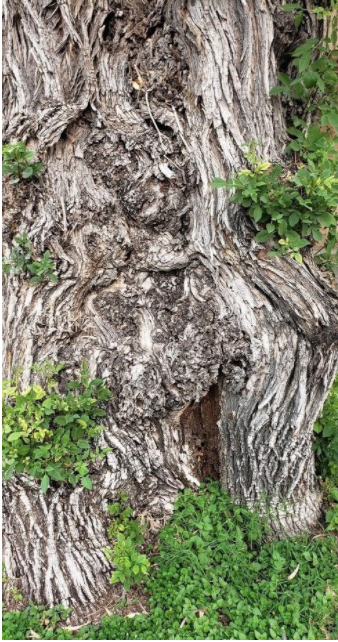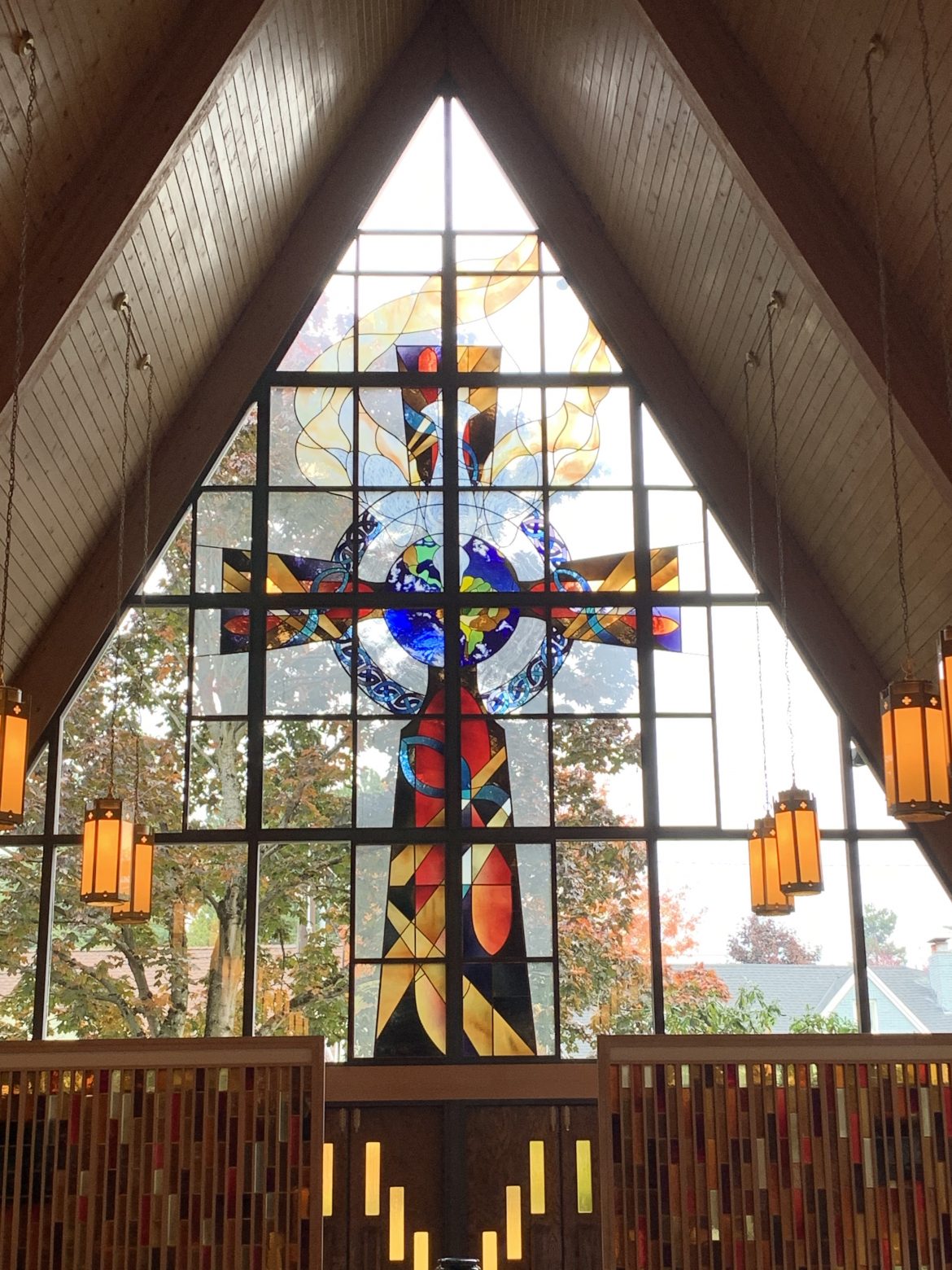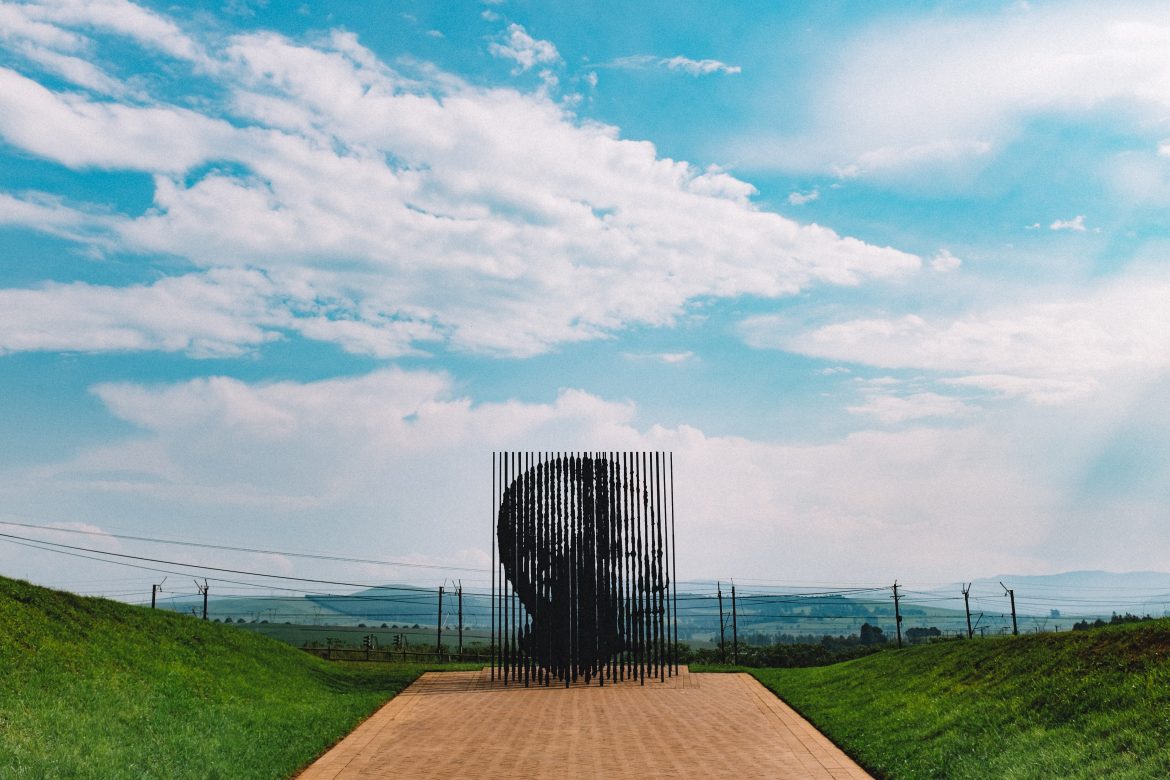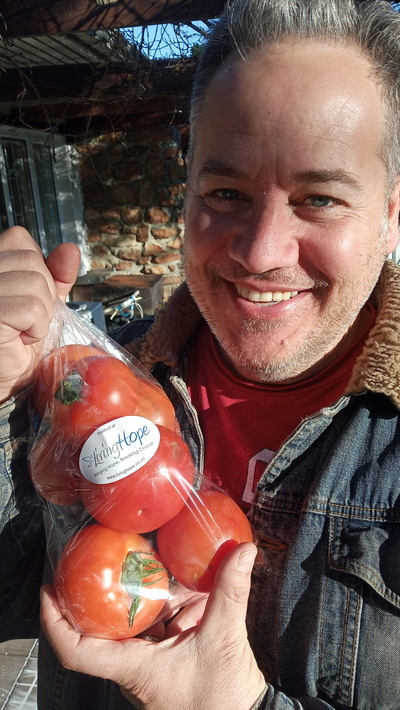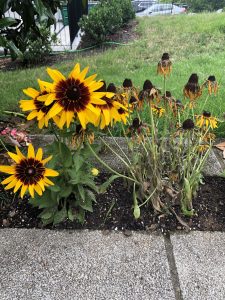by June Friesen
Adam and Eve in Genesis 2 & 3 found themselves in a perfect world. God placed them in a beautiful garden where all was perfect with one restriction, ‘not to eat the fruit of the tree of knowledge of good and evil.’ But they made a choice to eat that fruit and then found themselves in a whole different situation – life was now much more difficult. In some respects, we too may now feel that we are in a whole different situation, which we are. We may even long for life to be ‘normal’ like it used to be in 2019 and before – and you may even find yourselves saying like I do, “When is life going to be ‘normal’ again?” Come with me on a little adventure and see what the Spirit may have to say to you today.
Could it begin “Once Upon A Time?”
‘Once upon a time’ I often think and maybe it is a daily think as I pass by this tree –
With its gnarly, beauty dotted trunk embracing sprouts, crevices, knots, and so much more –
I wonder what it would be like to nestle down inside where the roots abide –
Would it be a protective shelter where one might abide in protection and safety?
I really need to find some way to embrace the gifting and reality of God’s embrace?
His first creation was of all the beauty around humankind – and finally humankind –
Somehow God felt and hoped that they/we would see the wonderful gift of creation
And embrace it, treasure it, live with it, grow with it and care for it as much as He did.
Yet, somehow humankind got sidetracked as each one of us struggle with yet today
And listened to another call, quite the opposite it would seem from the Creator,
They chose to make a trial of something forbidden – and OUCH! Life was forever changed.
Somehow that is how I am feeling – Ouch! – And now our lives are forever changed –
I would love to dream of this great little place pictured here as my new and wonderful abode –
Away from the viruses that seem to be running amuck –
Away from the ugliness of humanity still listening to that forbidden voice –
Away, away, far away –
But then I reckon – I would be no different than in the beginning of time
Because that would be the opposite of what my Creator is asking of me.
So… I think that I will have to carry on – where I am, but in a whole new way of life..
Now let me reframe this whole picture a little bit differently –
Many there are, and you may feel this way as well, who need someone to provide this haven
Where there is safety, unconditional love, non-judgment, forgiveness and most of all hope –
And then I wonder – as I wander out and about in this world –
How it is that there indeed are times when this is already evident – and I act surprised?
A voice speaks, ‘Thank you, Ma,’ a person I have now just met;
A voice speaks, ‘Can I just look at your face for a minute or two? It is so full of peace.’
A voice speaks, ‘I am 20 cents short; I will have to put the milk back and I have a quarter in my pocket I can share. A smile is thank you enough.’
A voice speaks, ‘I had to have surgery and now my bed is very uncomfortable to sleep on – and you have a bed you do not use. You can choose to share.’
A voice speaks, ‘Will you be my mother/father; I have no parents to give me guidance and counsel on my way.’

photo by June Friesen
So, what/who are the voices that are speaking to you as you go through the world?
Do you hear them? Do you listen to them? Do you make them feel special?
A fairy tale existence you say? It is not possible you say?
But I will say – “Come and spend a wee bit of time with me – let me share with you the treasure I have found in God (and some would say it is all a fairy tale I know); But we will begin to explore with wonder and a wee bit of glee, well it might even get to be a whole lot of glee – I will help you find that special haven somewhere with God’s Spirit even if it is not ‘truly a fairy tale home beneath the roots of this beautiful tree’.
June Friesen 6/2020
by Christine Sine
Last week, I taught a couple of workshops on awe and wonder in the healing of trauma. As part of the workshops, I took participants through an exercise in doodling. They loved it and so I thought I would invite you to enter into the exercise too.
The Power of Doodling
Doodling is a great problem solver and de-stresser. It can help us maintain our emotional balance and express our unconscious feelings. Evidently the repetitive and rhythmic motions of sketching can activate the relaxation response as a way to counter the body’s fight-or-flight intuition. Making art in any form has been shown to reduce cortisol, the “stress hormone.”
I am finding that it is also a simple way to introduce us to awe and wonder without even needing to go outside. There is a whole reservoir of awe and wonder experiences, memories hidden in our unconscious brain that we can easily tap into by simple experiments in doodling.
We all need a daily dose of awe and this is something that you might like to experiment with.
What gives you a sense of awe: Doodling is one of the exercises I experiment with in The Gift of Wonder and I increasingly appreciate what a powerful therapeutic tool it is in this time of stress and high anxiety.
So let’s give it a go.
This is not about art and no one else will see what you do. You don’t have to have a complicated template that someone else has created either to be able to doodle. In fact my experience is that we do our best doodles and find the greatest relief from stress and connection to awe and wonder when they are done spontaneously.
Yesterday one person commented “my doodle made me realize that God builds on the lines that seem to have no purpose.” Another said – because I used my non-dominant hand some lines were really thin and others thick – it made me realize that beauty is in both the deepness and the shallowness of my life and of the world around me.”
My own doodles are usually fairly simple like this one. Starting with a simple ink line, I filled in the shapes and sat in amazement when I realized how the chaotic lines I started with had been transformed into something beautiful.
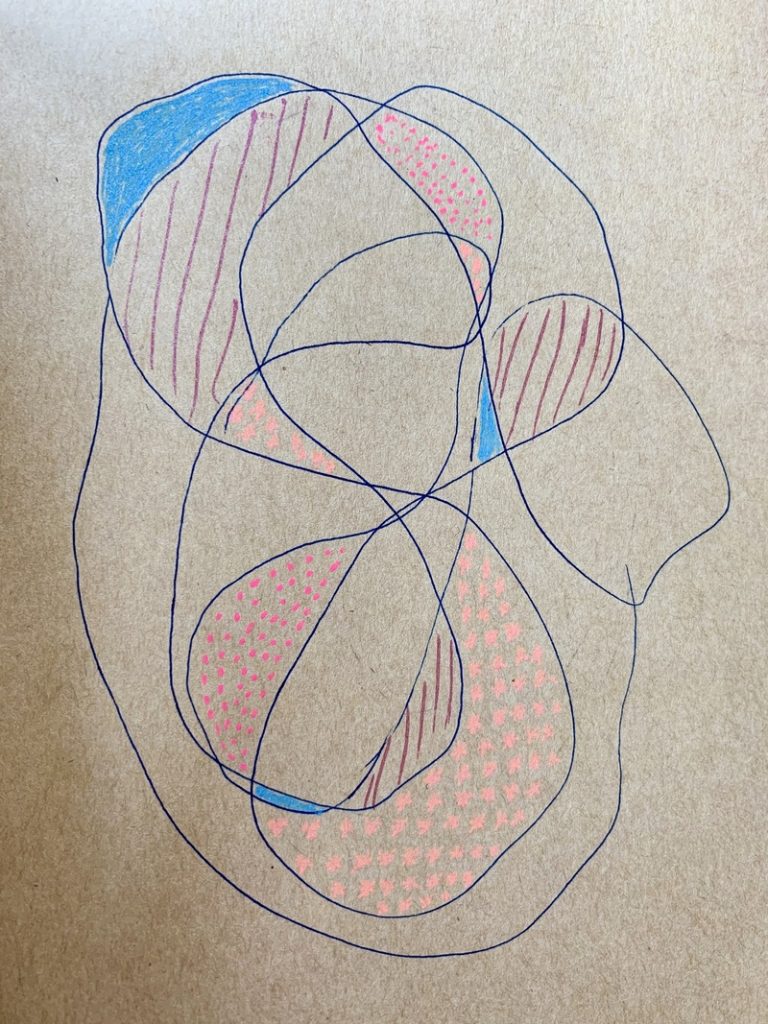
Creativity Out of Chaos
This next image was done by Ashley Davis Gavila at one of the workshops. The green line she drew with her eyes closed and then added the rest as she sat and contemplated her image. She calls it “Reclining in the Storm.”

Reclining in the Storm. by Ashley Davis Gavila
Having seen these, you can relax and enjoy yourself with no inhibitions. But be warned. This doodling exercise means that you need to be willing to let go of your control – of your anxieties, your fears and even the control of your life. It is an exercise that helps us connect our awe inspiring God, the creator of the universe who never leaves nor forsakes us.
Let’s Get Doodling
Pull out a blank sheet of paper.
Pick up a colored pen or pencil with your non dominant hand. Non dominant hand because that helps us connect to our creative self.
Close your eyes and take a couple of deep breaths in and out.
Doodle for 30 seconds – Reciting “I believe in an awe inspiring God” as you do so.
Open your eyes and contemplate what you have drawn. As a shape emerges in your mind add colour and design.
Prayerfully ask yourself “Where does this shape come from? What does it need to be complete?”
What do you sense of God in this image? What do you sense God is saying to you through this image?
Is there a further response God is prompting you to make? Perhaps you would like to write a poem, say a prayer or even create another doodle.
Sit in the presence of God when you are finished, allowing the healing One to bring you wholeness and peace in this challenging time.
For more creative doodling exercises download Colourful Me: Open Ended Art Exercises to Bring OuT Your Creativity
NOTE: As an Amazon Associate I receive a small amount for purchases made through the links above.
by Christine Sine
As we all continue to struggle with the trauma of our current situation contemplation and lament are two of the powerful tools that people of faith have to sustain and strengthen them. Enjoy!
A contemplative service for the Seventh Sunday after Pentecost. Carrie Grace Littauer, Prayer Leader, with music by Kester Limner and Andy Myers.
Permission to podcast/stream the music in this service obtained from One License with license #A-710-756, except as noted below.
“Christ Be With Me”, text from the Lorica, or the “Prayer of St. Patrick.” Song by Ruth Cunningham, used with permission. All rights reserved. www.ruthcunningham.com www.youtube.com/ruthreid/ Instagram: @ruthreid11
“Kyrie” and “Even in Sorrow,” text and music are composed by Kester Limner, shared under the Creative Commons License, Attribution (CC-BY).
www.saintandrewsseattle.org
This service of Lament was recorded on Wednesday.
Join us as we gather again tonight to lament what’s wrong, share our sorrows and our small gratitudes, and pray for our country, and for our world. Back in March, so many of us thought by now things would be back to “normal.” But it’s not. As COVID-19 continues to rage on around the world, and as our nation has its racism and division thrown in its face once again, so many of us struggle with how to seek justice, love kindness and walk humbly with our God in this time and place where “normal” is being re-defined. But we don’t have to be alone in this.
Music in this video:
Song
Several years ago I watched a documentary on the Apartheid in South Africa during Denver’s Film Festival. I have spent time in South Africa and love the country. I have seen Mandela’s cell in the prison on Robben Island. I have been to Soweto and the museum in Johannesburg and listened to the stories. Though the film revisited many of these places, I actually recall very little of it except for the story of one man. He had a position in the South African government that supported and benefitted from the apartheid, the system of legislation that enforced severe racial segregation. He was also a Christian.
What I do remember of the film was his ache. “I didn’t see, I didn’t see,” he cried. Tears of repentance and lament dimmed his eyes as he described his awakening to the suffering and humiliation imposed on black South Africans by the privileged white regime. His lament is one that I hope and pray will be the cry of many white Americans as we slowly awaken to the reality of the experience of black people in America.
We simply don’t see. It is extremely difficult for white American Christians in particular to recognize our racism. We don’t like this word. We react to this word. But to move towards healing, we need to face this word. It’s not that most of us would ever wish misfortune upon a person of color, nor would many of us knowingly treat a person of a different race insensitively. Most of us just go about our lives, trying to be nice. And comfortable. And happy.
We simply don’t see.
We have a built in defense against seeing our complicity in the painful realities of the lives of those who are not white in America. We have created a church culture in which any sense of darkness, failure or just plain selfishness in ourselves is too shameful to admit. We have learned to cast the yuckiest parts of ourselves into shadow so we can present what is manageable and attractive. It is not uncommon to hear people talking about “what the Lord has been working on in me.” But it’s rare to hear the real humility of simple honesty: I am both saint and sinner, glorious and grotesque. And sometimes I’m just a jerk. I’m afraid. I get nervous when walking past a black man I don’t know. I assume that if a cop shoots a black man then he must have been guilty. “They” struggle because “they” don’t work hard enough. We don’t admit these things out loud very often. We are too practiced at presenting ourselves to be better than we actually are, and so we are not transformed in the deep places.
We don’t understand what life is like living in a black body in this nation. We simply can’t understand why “they” can’t just be like “us.” We don’t understand systemic injustices. We don’t realize that we judge others’ experiences and complaints and sufferings through the lens of our own lives and opportunities and presumptions. We don’t see that white lives are very privileged, which means that everything is tilted in our favor. We rarely meaningfully interact with people who struggle to survive underneath our society’s oppressive heel. We don’t see that we all have an innate suspicion of the other. We simply don’t see that we are deeply racist because we are deeply human.
It will be costly to learn to see through the eyes of the other. But it doesn’t start with scolding. It starts with love. Our faith brings us face to face with the gaze of Love. Most often we turn from its penetrating brightness. But once the light of that love has illuminated our hearts, we can begin to see others with new compassion. We can see ourselves with that compassion too, and be less fearful of seeing the ugly things we haven’t wanted to see. Encountering this Love is way of healing. It lifts the logs from our eyes and we see anew. It is the way of Christ.
Nelson Mandela knew such love. He was imprisoned for 27 years for opposing a regime whose apartheid laws constitutionally entrenched the humiliation and condition of de facto slavery for South African blacks. He was considered a terrorist. However, he spent his imprisonment learning Afrikaans, the language of his white captors and over time he won their respect. He read their books, and their poetry. He knew their souls. He created relationships through which he entreated the prison guards to treat him as a fellow man – one with human dignity. When he was released he treated everyone, including his former enemies, with the same respect and dignity that he had engendered for himself. He had fought white domination and therefore refused to allow black domination. He was a master reconciler; he persuaded a whole people, in this case the most racially divided people on Earth, to change their minds towards one another.
After Mandela’s release and the dismantling of apartheid law, the ANC (African National Congress) party was certain to win the first democratic election in South Africa in 1994. Nelson Mandela would become the President of South Africa. The party faced the small problem of deciding what would be the new national anthem for an essentially new nation. The old anthem celebrated the advance of white colonizers as they crushed black resistance. The unofficial anthem of black South Africans was a soulful, heartfelt tune about their longsuffering. It was gleefully clear to the new committee that the official white anthem was out. Mandela responded however, “This song that you treat so easily holds the emotions of many people who you don’t represent yet. With the stroke of a pen, you would take a decision to destroy the very – the only – basis that we are building upon: reconciliation.” He had spent 27 years getting to know the heart of those who had been his enemies. He taught that you win over people by respecting their symbols and all that is deeply meaningful to them saying, “You don’t address their brains, you address their hearts.” Eventually they pulled together two anthems in five languages into one united song.
And slowly, gently, hearts were changed, like that of the weeping Christian man in the documentary. “I was blind and now I see,” he cried. Hearts were transformed because someone listened, learned, and opened himself to the other. Mandela refused to ever compromise on the dignity of the human person no matter what color, political stance or religion. Some in the former apartheid regime feared a reverse apartheid. Instead, Mandela learned their stories, he listened to their souls, and he honored their lives. He crossed over into the reality of the other. And a nation healed.
May it be so for us, America. We have been graced with the light of God’s love and the hard won wisdom of this teacher who helps to illuminate our darkened path.
The Light shines in the darkness and the darkness has not overcome it. (JN. 1:5)
“I once asked Archbishop Desmond Tutu, a Nobel peace prize winner like Mandela, and one of the people who knew him most intimately, if he could define Mandela’s greatest quality. Tutu thought for a moment and then – triumphantly – uttered one word: magnanimity. “Yes,” he repeated, more solemnly the second time, almost in a whisper. “Magnanimity!”
There is no better word to define Mandela. No leader more big-hearted, more regal, more generously wise. Not now and, quite possibly, not ever.” ~John Carlin
Mandela was a reader. Some books that help with learning and listening include: Disunity in Christ by Christena Cleveland, Divided by Faith by Emerson and Smith, The New Jim Crow by Michelle Alexander, Just Mercy by Bryan Stephenson, Between the World and Me by Ta-Nehisi Coates, and the many powerful novels by Toni Morrison.
[This has been reposted, originally from Nelson Mandela Day 2016]
For more posts about Nelson Mandela:
Photo above: Karl with some Living Hope fresh tomatoes – by Jenneth Graser
My husband Karl lost his job a couple of months ago due to the COVID-19 pandemic. As you can imagine, we were on the coronacoaster with everyone else, completely disorientated and having our plans turned upside down! Like so many nations, we too went into enforced lockdown with many restrictions placed upon us and didn’t know how to proceed. We considered our options, and felt that this was the time to make a positive difference in any way we could while we continued looking to God for discernment to help us know how to move forward. Together with so many people around the world in the same boat at precisely the same time! Unprecedented times of uncertainty call for unprecedented leaps of faith. And so…we took a leap!
Karl decided to turn our massive life upheaval into an opportunity – to go and volunteer at a local non-profit organisation (NPO) in the deep south of the Western Cape. Initially invited to come and visit the NPO by friends of ours, Karl was introduced to this incredible organisation a few months ago.
Living Hope, the name itself spoke to us from the outset. And, of course, their vision:“Bringing Hope, Breaking Despair”. Together with a staff of about 230 people and many volunteers, they work tirelessly to reach out with practical care into the local impoverished communities of the southern suburbs of Cape Town including Masiphumelele, Ocean View, Red Hill, Muizenberg, Capricorn and surrounding areas. With the head office in Capri where the farms are situated, they grow vegetables by means of various farming techniques including hydroponics and aquaponics in greenhouse tunnels and open vegetable gardens. These vegetables are then sold to help self-sustain and also provide food for the surrounding impoverished communities.
Living Hope provides life skills training, a health care centre, an 18 month agricultural training programme, a substance abuse rehabilitation programme, charity shop and food distribution programmes especially during the Covid-19 crisis. Chronic medication is delivered everyday to between 100-120 patients covering a wide geographic location during the pandemic, to ensure the False Bay Hospital clients are able to adhere to their medication schedules and to protect them from the risk of contracting COVID-19. And they are looking to extend the farms especially to help meet the increased needs, so they can take on more students for the agricultural course which will enable them to feed more people and hugely increase sustainability.
The feeding programme during the crisis of COVID-19 means that many hundreds and thousands of mouths are being fed where people especially in the impoverished communities have lost their jobs and are therefore hungry and in desperate need. Many donations of food have been given to Living Hope by a variety of different organisations particularly during this time. Masiphumelele community street leaders have been trained by Wonderbag (foam-insulated slow cooking bags) to cook for and provide food for their neighbours who are sick, elderly, children and those who are hungry. Collaborations like these where companies make donations to Living Hope enable this extensive feeding programme to continue.
This Mandela Day, a large donation of frozen chickens has made it possible for the Wonderbag ladies to feed many of their neighbours in need with nutritious meals. It’s amazing to see how the communities come together in this time of crisis to help each other.
Nelson Mandela himself said… “We can change the world and make it a better place. It is in your hands to make a difference.” And “It always seems impossible until it’s done.”
What an incredible privilege to be able to partner with the heart of Living Hope at a time like this. As Ralph Abernathy said, “I don’t know what the future may hold, but I know who holds the future.” Trusting God to provide for our needs when we no longer have a dependable income or job to rely on means that we have to look to God to open doors into what might have previously felt impossible.
As we look to God together during this time of uncertainty, I believe we will see the multiplication of the loaves and fishes, we will see the feet and the hands of Jesus, yes we will see miracles in the land of the living. I’ve been reminded of this scripture so often recently, “Look to the Lord and his strength, seek his face always.” Psalm 105:4
Even though we’ve lived in Cape Town for most of our lives, we didn’t know anything about this wonderful place. I’m so glad that’s changed. Karl has been helping with marketing and fundraising, with a substance abuse programme, with the chronic medication distribution, interviewing people, taking photographs, videos and sharing their amazing stories which have started bringing in much needed donations to help sustain these incredible projects. With God all things are possible!
We’ll see where the future takes us. We didn’t imagine anything like this could happen a few short months ago. A global crisis has certainly forced us into a new season, one that we didn’t anticipate or expect. However God can take our plans and rearrange them entirely, keeping our dreams in his care during this time of great uncertainty, learning to trust him like never before and allowing him to shape our days and plans in the way he knows best. We practice our believing one day at a time, and keep putting one foot in front of the other, in step with the leading of our Great Shepherd
Please take a look at their website: www.livinghope.co.za or Facebook https://www.facebook.com/LivingHopeSouthAfrica to find out more about how you can get involved.
You can watch this documentary film to get a better picture of the vision and heart of Living Hope. When we watched it recently, we were reduced to tears.
by Lilly Lewin
This week we are reflecting on Matthew 13 during our thinplaceNASHVILLE gatherings, The Parable of the Sower.
When you think of the Sower, do you think of a Farmer, or maybe a Gardener? or just a Flinger of Seeds?
Does the image of Farmer or Gardener change your impression of the Sower?
What do you know about Farmers? or Gardeners?
They work hard. They are aware of the seasons. They pay attention to the weather. Up with the sun. What else?
They are detailed, they spend hours looking at seed catalogues in winter, dreaming of what will be planted in the spring. They are generous with their harvest of vegetables or flowers. They aren’t afraid of getting dirty or having dirt under their nails. Both the Farmer and the Gardener care deeply about the soil. They both know the value of fertilizer, and know that pruning is necessary to make things grow well. They also know the value of good seeds. Healthy soil and the right seeds and weather bring life and good plants for the Farmer and the Gardener.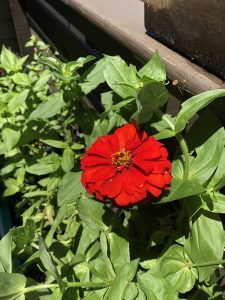
READ Matthew 13:1-17 in a couple of different versions. Listen to the passage, Bible Gateway has different versions you can listen to on their site. Allow the Holy Spirit to be your teacher. What is God’s word for you today? What is Jesus speaking to you about today? Ask, Listen, Notice what the Holy Spirit is saying to you! Really focus on what God has for you today, not all the things you’ve learned or studied about this passage in the past.
What do you notice that you didn’t notice before? What bothers you? What questions do you have? What does the Holy Spirit highlight for you?
Notice that the Farmer/Gardener is generous with the seeds! There is an abundance of seeds and they are lavishly sown. God is generous and there is an abundance. Consider where he sows the seeds. How does this make you feel?
READ the rest of the passage, Matthew 13:18-23 about the explanation of the parable. What do you notice that you haven’t noticed before?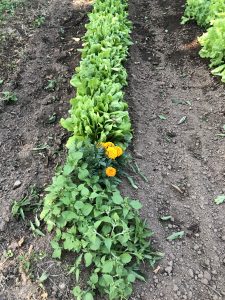
Consider the Garden of your Life… Consider the Soil of your heart… what does your soil lack today?
What is your soil feeling like these days? What is the soil of your heart like? Are you feeling well tilled? Or are the weeds choking you? Are you feeling beaten down or filled with rocks? Talk to Jesus about this.
Are you well watered? Or are you feeling dry and parched, cracked and in need of rain? Or are you feeling over watered… from just too much rain? Too much information, too much social distancing, too much bad news? Talk to Jesus about this.
How are you a garden in need of tending? Talk to the Gardener about this! 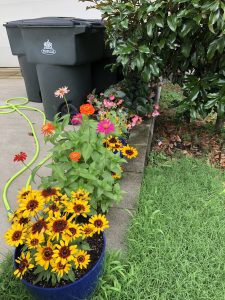
Consider that it’s the fertilizer that can restore the soil and bring growth to old soil and give life to a garden. It’s the organic fertilizer, the crap mixed into the soil, that can bring good growth. What crap has fallen on you lately? How can you see it as good fertilizer rather than just crap?
How does your soil need to be restored?
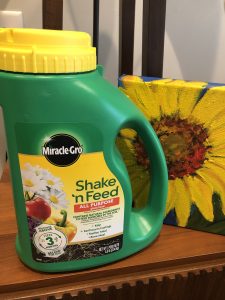
What is Jesus planting in you in this season?
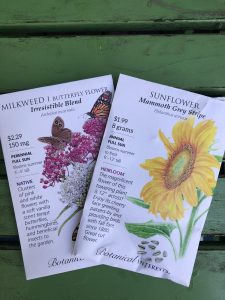
How can you watch for the flowers and God’s surprises among the weeds this week?
Are there artificial flowers that need changing into real flowers in the garden of your life? How do you need to be more real with Jesus? And How do you need Jesus to be more real to you?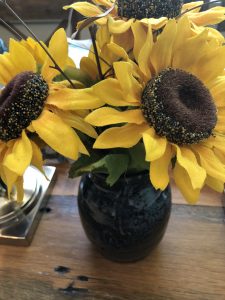 How are you comparing yourself or judging yourself and your soil today? How are you judging the soil and the seed responses of others? Talk to Jesus and allow his great love to flow to you and forgive you, and help you to forgive others.
How are you comparing yourself or judging yourself and your soil today? How are you judging the soil and the seed responses of others? Talk to Jesus and allow his great love to flow to you and forgive you, and help you to forgive others.
If comparison is the thief of joy then Lord, help me to not compare my life today to my life 6 months ago. Help me find the Joy in THIS life, and in THIS day and to know that it is from you, and it is enough. ”
Nadia Bolz Weber
HOMEWORK:
Find a plant, a seed packet, or some garden tools, or garden gloves to pray with this week. Take a closer look at these things. Hold them in your hand and ask God to help you see with new eyes what the Gardener, the Good Farmer is doing in your life! What is God growing in you? What is God using to dig out the weeds, or harvest the fruit, or to prune the plant so you can grow?
Take a walk around your neighborhood. What is God inviting you to notice in the gardens around your neighborhood? What seeds need to be sown there? What needs to be planted? Justice, Hope, Love, Friendship? Ask Jesus to show you? Pray for new eyes to see! and Ears to Hear what Jesus is doing!
What does it look like to grow roots and live out God’s dream in this place where God has planted you? ” Shane Claiborn
©lillylewin and freerangeworship.com
by Lisa DeRosa
Have you ever opened your personal email to find that all the unread emails you have are from companies you are subscribed to? When that happens to me, I tend to just mark them as read or delete them and move on with my day. But this week, Christine pointed out an email that we both received from the local sustainability coupon book company called Chinook Book. I am so grateful that she did because it has really impacted how I look forward to this Summer! The particular article that caught our attention was not due to the title (though a great one): 8 Ways to Relax into Summer without Leaving Your Hometown, but the paragraph below it that really sold us on the idea.
“You’ve heard about slow food, but what about slow travel? Slow travel is about soaking in your environment and making real and meaningful connections—with the culture, food, and scenery that immediately surrounds you. Walk out your front door and choose a different direction each day. You don’t need to focus on the destination. Instead, give yourself an opportunity to be guided by your senses. Walk toward the sound of the birds calling. Look for the art that reveals itself on buildings, in parks, and on the ground. Smell the aromas of fresh baked pizza crust. Savor the flavors of your own city and let your mind run wild.”
With staying home and staying safe this Summer, I have focused on what I am missing out on rather than what I can do even in this different season. It wasn’t that long ago that I wrote Practices for a Distant Socializing Difference, yet I seem to have forgotten about those wonderful opportunities! I can choose joy and embrace the beauty around me instead of focusing on what could have been. This idea of “slow travel” sparks a new sense of wonder for me and I am delighted to see how this shapes my Summer.
My husband brought this idea home, literally, when he set up a 12 station “road to reminiscing” date night for me in our home. I came through our front door to discover a trail of string leading to a note and numbered index card. The note explained that each station had an activity to remember and reminisce about our last five years together. He wrote the next destination on the bottom of the card and the string led the way. The journey included looking at framed photos, our wedding album, old blogs we made to update family on our travels, and a personalized snack for the remainder of the “road trip” when I made it to the kitchen. The final destination was my husband dressed in his wedding tux offering to dance with me in a circle that he created with the string. I must say, it is my favorite date that he has planned for us so far!

photo by Lisa DeRosa
This activity can be adapted for a date at home, for when traveling is not an option for celebrating that special occasion, or for yourself to experience joy in a tangible way when distant from family.
“Road to Reminiscing”
Materials:
- index cards or pieces of paper
- something to write with: pen, markers, pencil etc
- tape
- string/yarn.
What to do:
- Number your cards as you go along so you can keep track of the order
- Write the activity on the card and the next destination on the bottom
- Tape to whatever prop or item that corresponds with the card
- Use the string (and tape as needed) to direct to the next card/activity
Possible ideas:
- Start with a note about the experience and explanation of the activity
- Wear your favorite outfit or what you would wear out to a fancy dinner or trip
- YouTube music that will help you set the scene
- In the kitchen, prepare a favorite meal or specific food from the time you are reminiscing about
- Utilize each room of your home and yard (if applicable) to map out the road
- If you have a memory associated with an item on a shelf or table, wrap the string around it
- Dust off old year books and read the comments there
- Photo albums are great stations, but if you only have digital photos, your laptop/computer/tablet will work, just open to the folder with the photos you want to view
- Art or photos on the walls of your home can be a station to take time to stop and remember
- Prepare an outdoor activity in a similar fashion to what you are reminiscing, make sure your string leads outside!
My hope and prayer is that you allow God to walk you through the experience, feelings and joy, as you reminisce!
As an Amazon Associate, I receive a small amount for purchases made through appropriate links.
Thank you for supporting Godspace in this way.
When referencing or quoting Godspace Light, please be sure to include the Author (Christine Sine unless otherwise noted), the Title of the article or resource, the Source link where appropriate, and ©Godspacelight.com. Thank you!

